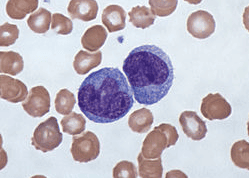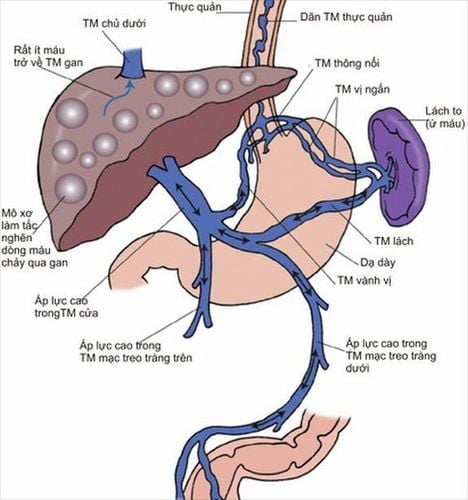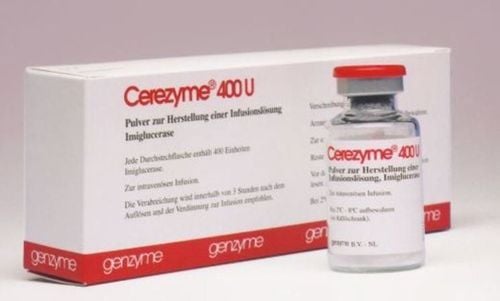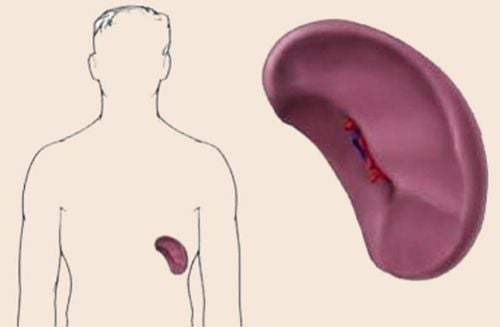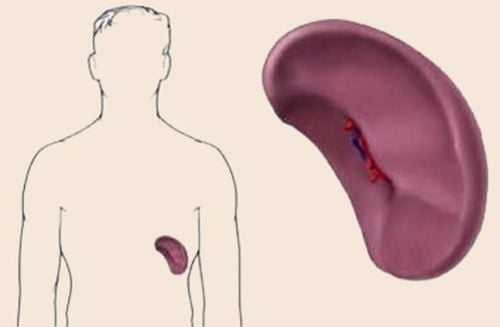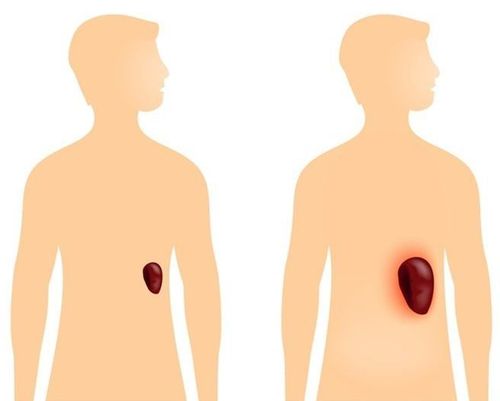This is an automatically translated article.
The article was professionally consulted by Specialist Doctor I Nguyen Hong Phuc - Emergency Resuscitation Doctor, Emergency Resuscitation Department - Vinmec Phu Quoc International General Hospital. The doctor has nearly 20 years of experience in Emergency Resuscitation.Not only is a part of the immune system, the spleen also plays a role in creating antibodies against bacteria and viruses that attack the body. An enlarged spleen is a sign of an infection in the body. The disease often has no obvious symptoms, making it difficult to diagnose.
1. What is the spleen?
The spleen is a small organ located just below the rib cage on the left side of the abdomen. This is a small organ, the size of each person's spleen is not the same. Normally a spleen is about 7-14cm long, weighs about 200g, is about the size of a hand and has a dark red color.The spleen consists of the following parts: the outer sheath; Dear. Inside the stem is red marrow containing connective tissues and blood vessels. The red marrow of the spleen filters the blood and replaces old red blood cells. Inside the red marrow is white marrow with the task of making antibodies.
The spleen is an important organ of the immune system, responsible for creating or nurturing B lymphocytes, T lymphocytes and blood cells. When blood enters the spleen through the splenic artery, it is divided into many branches. Each of these branches is surrounded by a lymph node. That is, every drop of blood that enters the spleen will remove pathogens and foreign agents.
The spleen performs many important functions such as:
Filtering the blood Stores products such as residual iron useful when red blood cells are broken down. Blood storage Plays an important role in the immune response. Lymphocyte storage. Removes old platelets from the blood and acts as a reservoir for platelets. Creating red blood cells for the fetus, after the baby is born, this function is stopped. With so many important roles, but humans can live with the removal of the spleen.
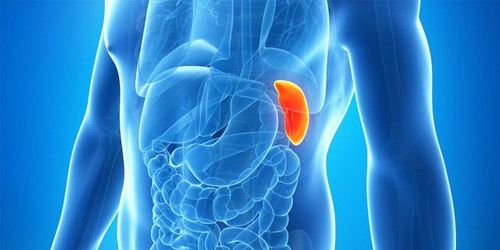
2. Causes of Splenomegaly
An enlarged spleen, also known as hypersplenism, occurs due to a number of problems from liver infections, diseases, and some cancers. The abnormality of the spleen causes it to enlarge and can weigh up to 2kg, even heavier. The causes of splenomegaly can be mentioned as:Monocytic leukemia due to viral infection The spleen is infected by bacteria causing diseases such as: syphilis, endocarditis Parasitic infection diseases of the spleen Liver diseases such as: cirrhosis Types of hemolytic anemia, premature destruction of red blood cells. Blood cancer Metabolic disorders.
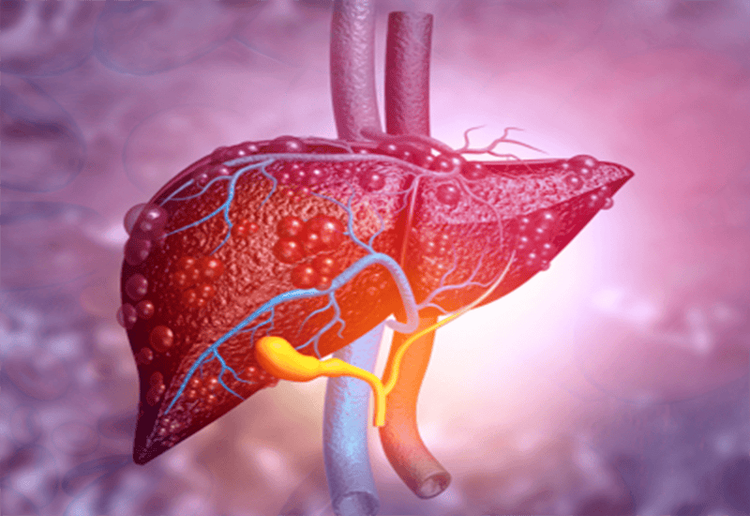
Extra spleen Splenomegaly: Splenomegaly: The cause of splenomegaly can be due to blood cancer, infection, liver disease. When the spleen is overworked, it destroys platelets and red blood cells. Spleen is crushed or broken: The spleen is a very vulnerable part, when the patient has an accident or a strong injury, the spleen can also be crushed or broken. Malaria caused by a parasitic infection also causes the spleen to swell., Thrombocytopenia Sickle cell anemia Splenic infarction Spleen cancer can happen to anyone, of any age, but there is a group of people at higher risk such as:
Children and adolescents with infectious diseases People of African descent who can develop splenomegaly as a complication of sickle cell disease - a blood disorder genetic. Ashkenazi Jewish descent, who are at high risk for Gaucher, Niemann-Pick disease and inherited metabolic disorders affecting the liver and spleen. Travelers to malaria-endemic areas.
3. Symptoms of splenomegaly
Symptoms of splenomegaly are often not obvious, but most people will experience symptoms such as:Left upper abdominal pain that may radiate to the left shoulder. Stomach bloating Anemia Fatigue Frequent infections Bleeding Spleen performs many roles and can be easily damaged. An enlarged spleen affects every one of these vital functions. Normally, the spleen has the role of producing white blood cells to prevent infection and fight invading pathogens. Helps with blood clotting by assembling red blood cells and platelets.
But as the spleen gets bigger, it begins to filter out normal as well as abnormal red blood cells, reducing the number of healthy cells in the blood. Excess red blood cells and platelets can clog the spleen, preventing it from working properly.
Splenomegaly if not diagnosed and treated will occur complications such as:
Infection, anemia and increased hemolysis. Spleen rupture: This is a very common complication, rupture of the spleen can cause abdominal bleeding and be life-threatening.

4. Diagnosis of splenomegaly
Once an abnormality is detected in the spleen, a doctor can make a diagnosis. Initially, the doctor will ask about the patient's history of symptoms, examining the left upper abdomen, just below the rib cage. In order to have accurate spleen status results, the patient will be assigned to perform a number of tests such as:Blood tests: With a complete blood count test, the number of red blood cells, white blood cells and urine is checked. demand in the system. Ultrasound or computed tomography (CT scan) allows imaging to determine the size of the spleen. Magnetic Resonance (MRI). In addition, in some cases, patients are required to perform some more tests such as liver and bone marrow function tests, bone marrow biopsies... to determine the cause of the disease.
If no cause for splenomegaly is found, the doctor may recommend surgery to remove the spleen. After surgical removal, the spleen is examined under a microscope to check for possible lymphoma of the spleen.

4. Treatment methods for splenomegaly
Although the spleen plays an important role in the body, people can live when the spleen is removed. Therefore, in cases where splenomegaly causes complications that cannot be treated, splenectomy is considered the superior treatment.However, after removal of the spleen, the patient may experience some life-threatening infection complications. Therefore, radiation therapy to shrink the spleen will limit the infection of the spleen after surgery.
Infection after surgery makes the treatment of splenomegaly ineffective, even causing unpredictable complications. Therefore, taking measures to prevent and reduce the risk of spleen infection after surgery is essential. Here are some ways to reduce the risk of infection after splenectomy:
A series of immunizations both before and after splenectomy, such as: pneumococcal (Pneumovax), meningitis and Haemophilus vaccine influenzae (Hib), which protects against pneumonia, meningitis, and infections of the blood, bones, and joints. Use antibiotics Avoid fever outbreaks.
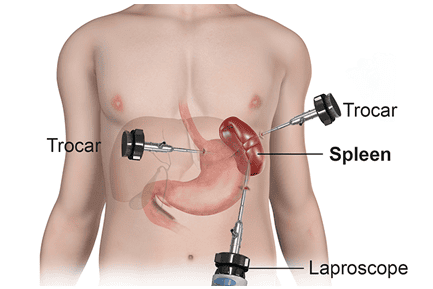
Vinmec International General Hospital is a high-quality medical facility in Vietnam with a team of highly qualified medical professionals, well-trained, domestic and foreign, and experienced.
A system of modern and advanced medical equipment, possessing many of the best machines in the world, helping to detect many difficult and dangerous diseases in a short time, supporting the diagnosis and treatment of doctors the most effective. The hospital space is designed according to 5-star hotel standards, giving patients comfort, friendliness and peace of mind.
Please dial HOTLINE for more information or register for an appointment HERE. Download MyVinmec app to make appointments faster and to manage your bookings easily.





